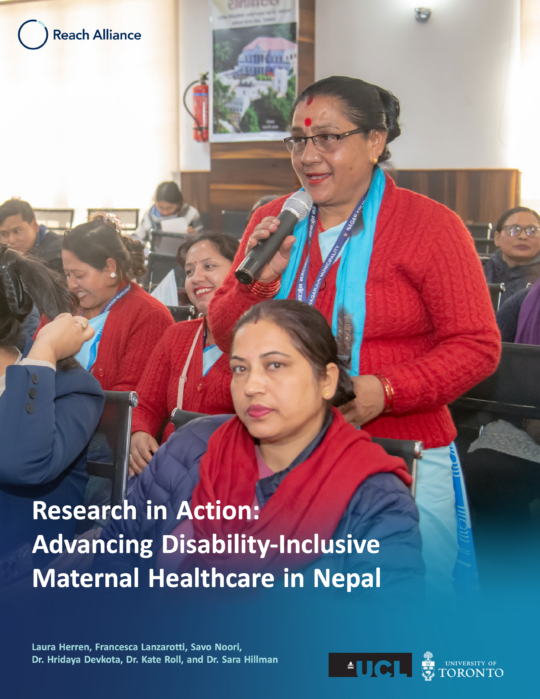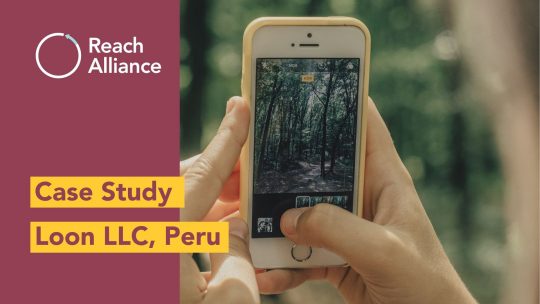Executive Summary
Although three out of every four people have access to the Internet in Peru, the country’s Internet infrastructure has occasionally been severely damaged by natural disasters or is non-existent in some regions. In 2017, excessive rainfall led to flooding and landslides that displaced hundreds of thousands of people and caused half the country to declare a state of emergency. In 2019, Peru suffered an 8.0 magnitude earthquake that further crippled parts of the country’s infrastructure. These events left vulnerable populations without means of communication in times of crisis.
Google Loon, a US-based telecommunications subsidiary of Alphabet Inc., offered technology to deliver emergency Internet connectivity to Peruvians. Using high-altitude platform systems in balloons, Loon’s innovative approach circumvented the need for expensive and vulnerable ground-based infrastructure. The project’s goal was to connect the unconnected.
Although widely praised for its innovation and unique means of delivery, Loon faced challenges in creating a long-term sustainable product that was both profitable for the company and reliable for the consumer. Their operations in Peru highlight a difficulty in transitioning from a short-term support system focused on disaster relief to a long-term commercialized good. We provide insights into Loon’s business model, stakeholder engagement and challenges faced in transitioning to Internet permanence. (Our work was entirely based on published materials and virtual interviews because we conducted research during the COVID-19 pandemic.)
Inequitable Internet Access
The United Nations’ Sustainable Development Goals were established in 2015 to focus organizational activity toward a more sustainable future. One inequality addressed in the goals is Internet access. Despite modern dependence on Internet connectivity for work, education and social life — a necessity highlighted during the COVID-19 pandemic — only about half of the world’s population is currently online, and less than 15 per cent of people living in the least developed countries are online. This inaccessibility exacerbates the already-growing inequality in impoverished nations and rural communities. A 2009 study from the World Bank indicates that “a 10 per cent increase in high-speed Internet connections can increase gross domestic product per capita by 1.3 per cent on average for developing countries.”1
Hard-to-reach populations are geographically, economically and socially isolated from the rest of society. Telecommunications projects have been implemented to reach these populations using various technologies, including satellites, cabling and balloon-based High-Altitude Platform Systems (HAPS). Projects from US-based companies — such as Facebook, Microsoft, SpaceX and Google — have attempted, with varying success, to service remote communities that have challenges in telecommunications infrastructure. With these new and emerging technologies, how do they transition from a short-term intervention to one that permanently provides service for these isolated communities? In exploring this question, we examine the activities of Google Loon, an Alphabet Inc. subsidiary that operated between 2011 and 2021, and its usage of HAPS technology in Peru from 2014 to 2021.
In Peru, Internet penetration was 73 per cent in 20202
The lessons from Loon’s experience point to the problem of achieving stakeholder alignment in the transition. During periods of disaster, governments, competitors, technology providers, investors, managers and even users sometimes assent to interventions that they later reconsider when it comes to potentially permanent provision. The preferences, technological impacts, challenges and profits that are revealed during the temporary intervention become the subjects of intense negotiation and contention. Timetables for decision making and commitment can fail to align across stakeholders. Each of the successful intervention’s consequences (designed as a stop-gap) can impede the transition of an organization such as Loon to permanence.
The Hard-to-Reach
At the time of Loon’s operations there were two distinct hard-to-reach populations in Peru: (1) those in urban areas who lost their Internet access as a result of natural disasters, and (2) rural populations who lacked Internet access in the first place because of the physical landscape of the Amazon and Andes. The problems of achieving Internet permanence are particularly intense in the harder-to-reach rural communities.
Urban Communities Affected by Natural Disasters
Peru is a country prone to natural disasters that can often affect the telecommunications infrastructure and cut off Internet access for many people. In 2017, the country experienced its worst floods in decades as mudslides destroyed much of the telecommunications infrastructure in Lima, leaving thousands of citizens without Internet access.3
Rural Communities
In 2010, under 1 per cent (0.8%) of rural households had access to the Internet at home. The physical landscape made it difficult to execute large-scale infrastructure development (i.e., road, power grid or telecom deployments), which in turn made the cost of providing Internet access to rural areas extremely high. The lack of competition in the telecommunications market caused by rural communities’ perceived unprofitability also blunted incentives for investment and blocked access through high prices. Rural communities’ vulnerability to earthquakes is particularly great. On January 14, 2018, rural Peru was struck by a 7.1 magnitude earthquake that had a devastating impact on local housing, roads and other infrastructure. The absence of robust Internet connectivity prior to the earthquake impeded rescuers, healthcare personnel and others charged with emergency response. It also made efforts at restoration difficult, although the lack of population density also meant that restoration requirements were substantially different than in the urban centre of Lima where a flood occurred in the prior year.
Telecommunications Context
In February 1994, the government sold its stake in the then-state-owned operators, CPT and Entel, officially privatizing the telecom market. The Spanish telecommunications giant, Telefónica, acquired a 20 per cent stake in CPT and a 30 per cent stake in Entel. In January 1995, CPT and Entel were officially merged into Telefónica del Peru. In 1996, the government sold all but 2 per cent of the state’s remaining shares. In 1998, they sold the rest. That year, Telefónica del Peru became the country’s largest telecommunications provider.
Table 1. Fixed broadband market share by operator, 2007–2017. Source: BuddeComm based on Osiptel and company data.Geography and Market Context
Peru is divided into three topographical regions: the coast, the Andean mountains and the eastern rainforests. According to the Organization for the Supervision of Private Investment in Telecommunications (Organismo Supervisor de la Inversion Privada en Telecomunicaciones or Osiptel), computer penetration in households rose from 25 per cent in 2011 to 33 per cent by the end of 2016. The highest penetration rate for computers and Internet use are in Lima and other cities.
The coast is served by a fibre-optic backbone — an 8,900-kilometre network from north to south, with three short branches into the mountains (to Cajamarca, Huancayo and Puno). The rest of the country (the Andean region and all eastern rainforests) relies on microwave and satellite links, which deliver much slower Internet connections. In July 2012, the government passed a “Law for the Promotion of Broadband and for the Construction of a Fibre-Optic Backbone” to reach remote areas. Mexico’s Azteca was contracted in December 2013 to build a 13,000-kilometre network. In mid-2015, two other companies were awarded contracts for regional broadband projects.
Most telecom cables are aerial and frequently in disarray. The proliferation of mobile towers, masts and aerial wiring has incited popular concerns over the perceived dangers of electromagnetic waves, prompting local authorities to delay or refuse to provide building permits for telecom infrastructure. The government has run campaigns to disprove these health hazards.
Peru has a dozen large Internet service providers (ISPs): Movistar (Telefónica del Peru), Claro, Americatel Peru (a subsidiary of Entel Chile), Terra Peru, Emax and Entel Peru, among others. In March 2008, telecom regulator Osiptel ordered Movistar to reduce the fees it charged to Internet service resellers up to 91 per cent to facilitate smaller broadband providers’ market entry, especially in rural or isolated areas.
According to Osiptel’s Telecommunications Services Residential Survey (ERESTEL), about 5.712 million households had a fixed or mobile Internet connection at the end of 2016 (66.5% Internet penetration). In rural areas there has been a shift to mobile connectivity, with only 46.3 per cent of rural Internet users making use of public booths compared to 64.8 per cent who connected via mobile networks. However, mobile penetration is highly unequal geographically, ranging from 155 per cent in Lima and Callao (urban centres where some people own more than one cellular device), to 26 per cent in Huancavelica, a more rural area. The households with computers rose from 25 per cent in 2011 to 35 per cent by the end of 2020.
Broadband subscriber penetration is considerably lower than the Latin American average, despite government efforts to encourage the sector’s development. Shortcomings in broadband penetration result from barriers such as poverty, limited levels of literacy, low computer penetration and the country’s rugged topography. One of the biggest problems is the lack of market competition, which has made broadband services among the slowest and most expensive in the region. Prices are high and access speeds are relatively low. Many of these difficulties are addressed through the government’s national broadband plan, which aims to provide connectivity through a fibre-optic backbone to the remote regions. However, the work has required substantial funding to implement.
Regulatory Authorities
Two main authorities are tasked with regulating the telecommunications environment. The first is the Ministry of Transport, Communications, Housing and Construction (MTC). Created in 1992, the MTC is responsible for developing infrastructure and promoting commonality of equipment via standards. The agency also develops policy, administers radio spectrum, approves technical standards and issues licenses. Another central organization is Osiptel, which is responsible for regulating and supervising the telecom services market, including tariff regulation, interconnection standards and quality of service. It also promotes private sector investment.
Included in the country’s telecommunications regulatory environment is the Telecommunications Investment Fund (FITEL), which subsidizes telecom projects. Initially funded by a 1 per cent levy on annual gross revenue of telcos that was administered by MTC, FITEL eventually merged with MTC in December 2018. This gave FITEL a greater number of resources and broadened the fund’s scope to support digital upskilling and the development of rural infrastructure.
Osiptel reported that as of mid-2018, there were 20,067 base stations — a fixed radio transceiver that exists in any mobile network around the world — across the country, but 36,510 base stations would be needed to safeguard services for mobile telecommunication.
Political/Legal Landscape
Since 2011, Peru has been implementing a new Internet penetration model with three main characteristics:
shared infrastructure (such as the backbone network)
the use of wireless technologies, which depend on the implementation of a range of core telecommunications technologies to drive signal into rural areas and
the application of subsidies to improve feasibility of household access.
Creating the fibre-optic cable backbone that will connect rural and urban areas is the most ambitious and difficult aspect of the national plan to improve connectivity because of the high costs involved. However, this is also the most vital step in connecting rural areas to the Internet. According to interviewees, this shared infrastructure makes it financially feasible for private companies to provide telecommunication services to rural areas. The fibre-optic backbone acts as a country-wide utility that companies can tap into for extending service into the most remote areas. The government expanded access in the past by providing frequencies to telecommunications companies in exchange for them expanding their reach to unserved areas. However, because of Peru’s decentralized government, and the fact that municipalities do not control their own budgets, it is often hard to implement development projects.
Economy
The lack of competition in the country’s telecommunications industry creates barriers to entry that make it too costly for new or small companies to enter the market, especially in rural areas. In the mid-2010s, the market for fixed broadband was led by Telefónica del Peru’s Movistar, which held a 92.6 per cent share of the market. Telefónica did not make great strides in expanding its services to rural areas because of the high costs of doing so, but its share of the market also made it difficult for others. The cost of entry into rural areas can be very high without government subsidies — the Amazon specifically has rough and undeveloped terrain that would require a lot of investment to make it suitable for use. Rural communities are also often low in income so they aren’t a desirable market for private telecommunications companies and until now have been grossly underserved.
Mobile and Internet services are in high demand in rural areas because community members want to be able to communicate with the city for commerce or talk to friends and relatives who emigrated from the community. It is often the local leaders, and not the wider community, who resist infrastructure development in the area, either because they are wary of new technology, or because they do not want to engage in revenue sharing. According to one interviewee, regional leaders are usually local business owners who have an interest in drug trafficking, logging or oil plantations and are not as interested in development if they are not personally benefitting. Many interviewees suggested the best approach to is to adopt demand-side subsidies, but this has not yet happened.
In other words, even prior to the floods and landslides, the Peruvian telecommunications industry faced a difficult set of choices in the allocation of resources to modernize established systems versus allowing foreign direct investment in the rural areas.
Public-Private Partnerships
According to A4AI’s 2013 Affordability Report, Peru ranks third out of 46 emerging and developing countries for communications infrastructure — a measure of the country’s infrastructure as well as the policy and regulations that support it — but ranked 13th in access and affordability — a measure that assesses the price of services and existing policies and regulations designed to improve levels of affordability.4
On the digitization index — which places countries in one of four categories (constrained, emerging, transitional or advanced), Peru is an emerging economy. This means that while it has achieved significant progress in providing affordable and widespread Internet access, the reliability of services remains below par and capacity is limited. The reasons for this could include the poor geographic location of certain rural populations — mainly communities found in the Andean mountains and lowland Amazon jungles — or the devastating impact of natural disasters on urban and rural infrastructure.5
Google Loon and the government had a public-private partnership (PPP): a “long-term agreement between public and private sectors with risks and benefits shared.”6 7
PPPs provide projects with innovative capacities, expertise and risk-sharing. In developing countries, these characteristics are crucial. PPPs have emerged to deal with shrinking government budgets, improve the performance of certain projects and capitalize on innovative capacity.8
Loon’s Operations
Alphabet’s X, the moonshot factory, is a research and development hub and incubator that works “to produce the inventions that might form the next Google.” Project Loon started in the factory and graduated from X in 2018 and was incorporated as Loon Inc. Alphabet tagged Loon Inc. under “Other Bets” which is the holding company for ventures that are meant to supplement Alphabet’s current revenues and help diversify away from the search and advertising business.
A project’s graduation from the moonshot factory represents a commitment and belief that it will succeed as a stand-alone company.
Loon used HAPS in balloons to provide Internet access to hard-to-reach areas of a country. In Peru, these areas were disaster centres and the Amazon. The balloons act as a receiver and transmitter of fourth-generation long-term evolution (4G LTE) Internet that Loon distributed through partnerships with telecommunication companies operating in the region, such as Telefónica, as well as local governments. Loon’s balloons operated 20 kilometres above the earth’s surface where they receive signals from the ground base stations of the local companies to redirect Internet connectivity to urban and rural areas. This bypassed the need for ground Internet infrastructure that is expensive to traverse difficult terrain or has been destroyed by natural disasters. Despite Loon’s promising features, the company shut down in early 2021.
HAPS Technology
HAPS operate at an altitude of 20 to 50 kilometres as an alternative for providing Internet access compared to traditional satellite or cable connection. HAPS first appeared in the late 1990s, with trials and testing ramping up in the 2010s with the innovation of new technology (which lowered the costs and made HAPS more viable). The benefits of this technology include very rapid deployment, good capacity and low costs. These advances have not gone unnoticed by the International Telecommunications Union (ITU), where new frequency bands were allocated to HAPS at the 2019 World Radiocommunication Conference.9
Figure 1. How Loon works. Source: Lessons from Building Loon’s Stratospheric Communications Service. Loon LLC, 2021. Distributed under the Creative Commons CC BY 4.0 License.Loon’s balloon system was one of the many HAPS projects in existence but Loon was one of the only companies that operated with some success. Some of its successes could be attributed to the advantages of using HAPS compared to traditional methods of Internet connection. It bypasses the need for extensive surface infrastructure such as underground or underwater fibre-optic cables, which have high fixed costs and construction times. For providing connectivity during times of emergency this was crucial because Loon was less susceptible to damages caused by natural disasters like flooding or earthquakes. It also reached populations in rural, remote and mountainous areas that otherwise would lack infrastructure.
Loon’s flexibility in deployment was unparalleled. Because HAPS operates at a low altitude, it can avoid most wind and air traffic, providing a stable connection without the need for constant manoeuvring. Technological advances also make it possible to develop algorithms for balloons to sail the winds at different altitudes to most effectively position the cluster of balloons and ensure that the connection was not disrupted. The balloons can also land for repair, redeployment and other maintenance at ease, whereas satellites cannot be recovered.
Their low altitude also meant they could provide coverage to small regions effectively because there was less transmission delay and power consumption compared to satellites. The elevation also helped avoid interference by obstacles like buildings and terrain more effectively than cable connection.
However, there are also several disadvantages to HAPS technology. Even though it has improved immensely over the years, the technology is still not mature and developed enough for commercialization or as a substitute for established Internet technologies. There is currently no HAPS project that is widely available, with many, including Loon prior to shutting down, still in their early trial stage and used only for short-term deployment because of their maximum flight duration of approximately 100 days. HAPS technology is also susceptible to crashes caused by unexpected wind changes or failure, despite best attempts to predict wind movement. With the recent emergence of HAPS and the lack of studies on its technology, there is a lack of understanding of the stability and speed of the Internet provided — a common grievance.
Among Loon’s competitors providing connection to rural and hard-to-reach areas, SpaceX’s Starlink has shown potential in being able to scale and be sustainable in the long term. Unlike Loon’s usage of HAPS, Starlink uses low Earth orbit satellite technology that is 60 times closer to Earth than conventional satellites, which lowers latency and performance issues in providing connection. Satellites have the benefit of being more durable and cost-effective compared to Loon’s balloons, which had to land for maintenance and redeployment and were susceptible to unexpected winds.
Figure 2. Loon fleet over Peru, Bolivia and Brazil. Source: Loon Library: Lessons from Building Loon’s Stratospheric Communications Service. Loon LLC, 2021. Distributed under the Creative Commons CC BY 4.0 License.Loon in Peru and Kenya
Response to Disaster
Disaster preparedness is “the extent to which individuals and organizations are equipped and ready to respond to negative environmental threats.”10 11 12
Peru is actively working to evolve its disaster risk�management approach. The high priority at the national level stems from the critiques of disaster responses in the media and political circles, as well as the economic impacts on the population.13 14 15
Second, the country has historically had a centralized emergency-management system that limits local jurisdictions’ ability to handle their disasters.16
To rectify these shortcomings, Peru reformed its disaster risk management between 2005 and 2015. The reform was based on the Hyogo Framework for Action (HFA), which focuses on five areas of intervention: (1) a decentralized system, (2) increased disaster risk assessment and monitoring, (3) creating a culture of resilience through education, (4) strengthening environmental and planning institutions and (5) creating a new strategy for urban planning. While not specifically mentioned in the HFA, addressing poverty contributes to the success of areas (3) and (5) of the HFA.
Peru’s disaster recovery is jointly run by two government agencies: the National Civil Defense System (SINADECI) and the National Institute of Civil Defense (INDECI). SINADECI’s role is to protect the people of Peru and provide appropriate assistance for the population’s rehabilitation after a disaster. In contrast, one of INDECI’s main objectives is to “create a culture of prevention and focus attention on all aspects of disaster management.”17 18
According to Alastair Westgarth, CEO, Loon already had the required permission from the government and aviation authorities when the 2017 floods hit and thus offered its services.19 20
According to an interviewee, Loon was given only a short-term licence to continue testing following the 2017 floods but never provided the results of that testing to the government, implying that they had not been favourable. Following the 2019 earthquake, Loon agreed to provide its disaster-relief services, perhaps indicating an attempt to gain the government’s goodwill to extend their contract and evolve into a commercialized service.
Figure 3. Balloon recovery in Peru. Source: Loon Library: Lessons from Building Loon’s Stratospheric Communications Service. Loon LLC, 2021. Distributed under the Creative Commons CC BY 4.0 License.Commercialization
Loon identified that operating in the stratosphere offers multibillion-dollar business opportunities in the markets of telecommunication, weather prediction and modelling, and high-resolution earth observation among other potential use cases.21
In the early days of Project Loon, Mike Cassidy (former vice president and project leader) in 2015 estimated that if even 5 per cent (approximately 250 million people) out of the 4.5 billion people worldwide without Internet were to gain access through Loon for a monthly fee of about USD 5, a provider would earn around USD 1 billion in revenue monthly.
Table 2. Internet users and user penetration rate — 2010–2018. Source: BuddeComm based on ITU and Internet Live Stats data .Commercialization in Peru
In 2014, Loon began collaborating with Telefónica to test Loon’s technology and connectivity. The Peruvian government had granted Internet frequencies to Loon to conduct these tests for an initial six-month period with the ability to extend the testing period for another six months. The success of Loon’s responses to natural disasters afforded the company continued access to test their project and evolving technology in Peru.
In 2019, Loon entered a contract with Internet Para Todos Perú (IpT) — a Peruvian telecommunications company designed to target hard-to-reach communities — to provide connectivity in the Loreto region of the Peruvian Amazonia to Telefónica customers in 2020.22 23
To operate permanently in Peru, Loon had to meet certain regulatory requirements. According to an interviewee, for a technology to be adopted for permanent use, the national regulatory framework requires the technology to be approved by the ITU. While the ITU has approved other HAPS, it did not approve Loon’s technology. The government believed that the balloons’ mobile nature, coupled with the impact of unpredictable windspeed, meant that consistent quality standards would not be met. Given these two factors, the government did not grant regulatory approval to Loon’s permanent operations.
Commercialization in Kenya
In 2018, Loon struck its first ever commercial deal with Telekom Kenya to improve connectivity in the remote parts of the country. The joint venture received regulatory approval in March 2020 after President Uhuru Kenyatta fast-tracked the process to bolster telecommunication capabilities in response to the COVID-19 pandemic.24
In July 2020, Loon commercially deployed 35 balloons in association with Telekom Kenya. The balloons were deployed away from Nairobi, since the capital city is well serviced by other providers. The balloons covered a region spanning 50,000 square kilometres, providing connectivity to Iten, Eldoret, Baringo, Nakuru, Kakamega, Kisumu, Kisii, Bomet, Kericho, and Narok.25 26
Beyond its disaster relief and commercialization efforts in Peru and Kenya, Loon had some success in striking deals with telecommunication partners commercially. In 2019, it partnered with Telesat to license its custom-built temporospatial Software Defined Network (Loon SDN) (used to manage its LTE balloons) for controlling Telesat’s low Earth orbit communication satellites. In addition to its operations in Kenya, in 2020 Loon also signed a commercial contract with Vodacom to provide Caba Delgado and Niassa provinces of Mozambique.27
Evaluating Successes and Challenges
Because of the nature of Loon’s operations — they responded to a natural disaster then attempted to transition to a commercial product servicing rural communities — there is a clear distinction between short-term and long-term success. In the short-term disaster-relief context, success was determined by Loon’s ability to support the government’s disaster-relief efforts. Did Loon effectively contribute to emergency infrastructure and telecommunications? Did Internet provision through HAPS positively contribute to relief efforts? In contrast, long-term success would involve Loon’s ability to service hard-to-reach communities that previously had little to no Internet connection because of their geographic isolation, while at the same time having a sustainable project model that lasts beyond initial trial phases.
Disaster Relief
Figure 4. Balloon filled prior to launch. Source: Loon Library: Lessons from Building Loon’s Stratospheric Communications Service. Loon LLC, 2021. Distributed under the Creative Commons CC BY 4.0 License.In 2017, floods and landslides displaced over 100,000 people and disrupted telecommunications infrastructure in Peru. Loon had been testing its technology and potential connectivity in the country with Telefónica and was granted approval by the government to support flood-affected regions. Loon could therefore lay down their ground infrastructure, which connected the balloons to the Internet infrastructure, in a matter of days. The partnership with Telefónica enabled tens of thousands of their customers to be connected to the Internet through Loon’s coverage. Over a seven-week period, Loon’s coverage reached 40,000 square kilometres and facilitated over 160 GB of data, equivalent to around 30 million WhatsApp messages or 2 million emails.28
Loon replicated its success in providing quick and reliable services during disasters during the 2019 earthquake. Thanks to the pre-existing infrastructure and constant testing of their technology in the region, Loon could provide service within 48 hours of the earthquake. Because Loon’s technology could be redirected at a moment’s notice, it could provide coverage to areas that were severely affected by the disaster. Loon reached over 20,000 unique users in its first two days of operations, restoring crucial connectivity for residents during an emergency.29
In both cases, Loon successfully reached and restored Internet connectivity for thousands of people who became hard to reach after disasters. Its technology allowed it to respond quickly and bypass challenges of geography. Since these were temporary situations, none of the significant disadvantages of balloon technology (such as its short deployment duration) had an impact on its operations.
When Loon participated in the disaster recovery efforts in Peru, it allowed telecommunication partners to use its services free of charge.30 31
Loon’s goal in responding to the natural disasters was not financial — it was to support the relief efforts, much as it did in 2017 when Loon part�nered with AT&T and T-Mobile to provide basic connectivity to 100,000 people in Puerto Rico following Hurricane Maria.32
Nondisaster Relief
Hard-to-Reach Populations
While there is no readily available information on the impact Loon’s services had on rural areas (from Loon itself or other sources), studies generally show that Internet access has a net positive impact once it reaches hard-to-reach communities. Economic and educational advances occur in rural communities with the introduction of the Internet. There is a high demand for Internet access in rural areas because it allows people to communicate with friends and family who have left the community. This initial use quickly leads to economic opportunity.
Local artisans and farmers are able to sell their products online without having to make long and often dangerous treks to larger towns. Online marketing leads to offline sales. Information about supply chains becomes more readily available. New opportunities for product and service development are clarified.
The Internet and social media specifically have also allowed civil society to organize — they have been used by Indigenous communities to collect donations and to detect illegal logging. Most recently, the Peruvian government worked with Internet Para Todos to ensure rural children had access to educational programming during the COVID-19 pandemic.
There are also challenges associated with introducing Internet connectivity to rural regions. One interviewee pointed to predatory practices in money-transfer schemes. To combat this, many interviewees suggested that along with improved Internet penetration, the government or private companies should also be providing educational programming on how best to use online services.
Technology
Loon had more difficulties in providing long-term Internet connectivity to hard-to-reach communities than in nondisaster situations. While effective in rapid deployment and achieving wide coverage over an area, Loon’s technology encountered problems in providing permanent service. During disasters, people affected by service disruptions were mainly urban and they had phones that could use LTE services. But in reaching more remote and rural areas, Loon’s LTE services were not useful where most people use phones that can connect only to older generations of cellular network such as 2G or 3G. While Loon’s integration of LTE services provided more reliable and faster connection, it failed to cater to those it intended to reach.
Another major obstacle to Loon’s permanence in Peru was the need for authorization by regulatory bodies. Loon acknowledged that its systems did not readily fit into existing regulatory frameworks.33
In 2017 alone, eight Loon balloons crashed, causing concern for regulatory bodies about the company’s capacity to control its balloons and prevent them from drifting or crashing into unauthorized areas of service. Similarly, Loon’s balloons could stay in the air for only a limited amount of time before they ran out of energy and helium, requiring accurate landing and take-off every 100 days or so, without disrupting the quality of service to residents. The ITU had therefore not approved Loon’s HAPS technology for permanent usage, meaning that the government could not authorize Loon either. These regulatory hurdles in Peru were not a stand-alone incident but a consistent pattern as Loon faced similar obstacles in both Indonesia and Sri Lanka.34
Alternative and more suitable technologies have been developed at a much faster pace than Loon’s HAPS technology. Low Earth orbit satellites such as Starlink and Kuiper are becoming more popular for reaching the hard to reach because they are more durable and reliable but can still provide Internet access with capacity and latency similar to current HAPS technology. While Loon had signed a deal with IpT to expand Internet access to remote areas of Peru, they were unable to begin operations because they lacked regulatory approval.35
Compared to IpT, Loon worked directly with telecommunications companies to connect their network to end users, requiring additional partnerships with mobile providers in reaching the hardest to reach. Loon stated that connecting with a partner operator’s system is a complex and laborious process because it requires new hardware installation, significant integration of systems and coordination of different teams.36 37
Economics
While supporting disaster relief efforts, Loon did not charge government authorities or the telecommunications partners. However, while transitioning to a nondisaster situation, Loon’s business model was to partner with local telecommunication players by providing their LTE spectrum via Loon balloons and splitting the revenues from any new customer.38 39
To improve the quality of the services offered to the users, Loon had the option to improve the performance of each vehicle, increase the size of the fleet by increasing the number of vehicles or optimize the way the vehicles operate as a fleet. Improving the performance of each vehicle and increasing the fleet size would have direct cost implications, while optimizing the fleet’s operations would not lead to any increase in costs. Loon therefore heavily invested in improving software automation and algorithms to operate the fleet more effectively.40
From a scalability and cost perspective, the most significant portion of Loon’s costs were vehicle and vehicle-related costs which included the costs associated with personnel, and equipment costs of manufacturing, launching, operating and retrieving the balloons. It is unclear how much Loon’s balloons themselves cost though a rough estimate involves “tens of thousands of dollars.”41 39
A Rural Business Model’s Viability
One of the key reasons for Loon deciding to wind down its operations was the unsustainable and unviable business model. The press release announcing Loon’s shutdown noted that Loon could not get its costs low enough for it to be a sustainable business. Loon’s revenues were naturally a function of adoption rates in rural areas which would likely have been uneven and slow, given that these communities are in remote and sparsely populated areas and may not have financial means or the e-literacy to subscribe to Loon’s services.
One interviewee mentioned the inter-related challenges of location and cost patterns that affect adoption rates in rural communities and called into question the viability of Loon’s steady revenue stream. Location patterns refer to the fact that rural communities are often scattered and located in hard-to-reach places. One interviewee pointed out that in the case of Loon, this might mean that in countries like Australia, Argentina and Canada, where there are vast areas of land with very low population density, the maximum coverage area of each balloon (a 30- to 40-kilomtre-diameter circle) might result in only 40 to 50 subscribers. Loon would have to operate several balloons to service these areas, and the cost of these balloons would have to be shared by very few subscribers, naturally driving up prices for prospective subscribers.
An article on Loon’s feasibility in Australia (3.11 pop/km2 ) estimated that users would have to pay around USD 833.19 each over five years to run with no cost to Google, assuming a 5 per cent take-up rate by users. The study concluded that Loon would not be profitable in Australia because the serviceable obtainable market is too small, and the coverage area is too large. However, it estimated that Loon would be profitable in India because of the higher population density.42
Conversely, areas with higher population density may yield a greater number of subscribers because the total addressable market is larger. The subscribers in these locations might even enjoy lower tariffs since the cost is shared by many prospective subscribers. However, these communities may lack the financial means to subscribe to Loon’s services. Besides income considerations, one interviewee pointed out that demographics, education and e-literacy rates also heavily dictate Internet-adoption rates in rural communities. They added that rural poverty entails low e-literary rates, leading to uneven and slow adoption in rural communities.
Despite these challenges posed by location and cost patterns and the unique geographical impediments posed by the Peruvian terrain, Internet Para Todos (IpT) has made significant strides in connecting the hard to reach. IpT has a revenue-sharing model that’s similar to Loon’s. It deploys, operates and owns the mobile access network, while the mobile network operators (MNOs) own the spectrum and the end users (and all associated activities such as marketing, billing etc.). MNOs split their revenues with IpT depending on the voice and data traffic. IpT is a neutral-host operator focused on providing services to any MNO on a wholesale basis. While it currently works with Telefónica and Entel Peru, IpT is jointly owned by Telefónica, Facebook, IDB Invest and CAF banks. Naturally, the unique synergies between Telefónica and IpT are an important factor contributing to its success. IpT has greatly benefitted from inheriting close to 3,000 towers with backhaul satellite technologies from Telefónica, enabling them to commercialize and scale quickly across Peru from the very beginning. Besides these synergies, IpT’s use of Parallel Wireless open RAN has led to a lean cost structure.
Because IpT is home-grown and partly owned by Telefónica, it intrinsically has a strong partnership with the largest telecommunications player in Peru. This contributes to its sustainable business model. For Loon’s business model to be sustainable in non-emergency situations, it had to forge strong partnerships with MNOs. However, one interviewee pointed out that incumbent carriers are usually reluctant to make long-term investments with outsider backhaul providers that can “compete and/or bypass them, to cut down subsidies or grants to capture prospective spectrum assets or any other potential benefits from local governments or regulatory bodies.” While Loon was attempting to position itself as a non-emergency provider, it had to fight battles on two fronts: one, with incumbent telecommunications players and two, with local governments or regulatory bodies to gain approvals to operate in sovereign space and use spectrum bands.
Another factor that could have negatively affected Loon’s financial viability was the early date that it spun off as independent from the parent company. Alphabet’s cash reserves of USD 100 billion could have been extended toward supporting Loon. Instead, in 2018, Loon was incorporated after it graduated from X. In April 2019, SoftBank Corp’s HAPSMobile, as a part of a long-term strategic partnership with Loon to promote the use of high-altitude vehicles to improve connectivity worldwide, invested USD 125 million in Loon.43
While IpT is a private organization focusing on profit generation through expansion of infrastructure, it also has a mission to improve the quality of life for people in the last mile. IpT launches application packages together with the Internet that help rural communities advance their interests and meet their needs. The “Escuelita IpT” includes telemedicine services, educational packages, basic financial courses and banking services and courses on how to use email and Facebook to stay connected.
Because IpT was created with a view to reach the hard to reach, it recognized the needs of rural communities and adopted a business model that would be sustainable in supplying Internet there. One of the reasons Loon’s business was not sustainable is that it did not take an approach specifically targeting the needs of rural communities. For example, Loon provided only 5G Internet access, whereas most rural communities do not have access to the requisite technology to use 5G networks. By contrast, IpT increased Internet services from 2G to 4G in most rural areas and provided technology like tablets and cellphones to communities that had never had Internet access before in order to create the demand required to sustain its business.
Lessons Learned
The public-private partnership between Google Loon and the government of Peru faced many challenges in communication, economic business modelling and viability of the technological innovations. The challenges and successes can guide future private stakeholders wishing to partner with public entities to service hard-to-reach communities. Based on our research, we offer the following suggestions to make public-private partnerships more successful in their endeavours.
Communication
During the short-term implementation of Internet services, Loon had success thanks to direct communication with their government partners. In disaster-relief contexts, this communication is essential for the success of relief efforts, and ultimately saves lives. However, the transition to a commercialized product meant to serve hard-to-reach communities was marred by poor communication and exchanges of information within the public-private partnership (PPP). According to interviews with government officials, the government did not receive updates from Loon regarding the state of their operations or the effectiveness of their Internet penetration. This lack of communication left the partnership in limbo and the government couldn’t fully commit to Loon in the long term without understanding the project’s effectiveness.
To rectify this issue for future PPPs, we recommend establishing consistent lines of communication and information sharing from the start of the project. Having these channels will facilitate trust between the partners, making the project more likely to have long-term success.
Expand the Partnership and Understand the Local Context
According to a 2020 report issued by the Inter-American Institute for Cooperation on Agriculture (IICA), the Inter-American Development Bank (IDB) and Microsoft on rural connectivity in Latin America and the Caribbean, there is a need for more up-to-date and complete data relating to rural connectivity.44
Prior to shutting down, Loon was set to partner with the IpT — highlighting the success and viability of the IpT project. The lesson here is that public-private partnerships cannot be limited to a narrow vision at their inception. When dealing with vulnerable populations in hard-to-reach areas, the number of partners must not be an afterthought. Stakeholders who understand the local context must be brought onboard to help facilitate the project’s success. By limiting the number of partners, the project will be less viable in the long term. Successful public-private partnerships must be willing to incorporate additional partners who have better knowledge of the target population.
Define Expectations at the Outset
One of the major challenges Google Loon faced was the transition from the short-term disaster-relief project to a long-term commercialized product because these are two distinct projects with very different expectations. Disaster relief requires short-term infrastructure that can be readily deployed to the area. Loon’s balloons were highly effective at meeting these expectations thanks to the rapid deployment of their technology. In contrast, long-term commercial infrastructure requires technology that can remain in place without disruption. Our interviews with government officials revealed concerns over the longevity and reliability of the balloons to operate indefinitely. The case of Google Loon is an example of success in one area not translating to success in another. In short, the expectations and results did not align. Future PPPs will benefit from defining their expectations immediately and recognizing that actions taken to support one project may very well impede success in another.
Recognizing the Target Population
Emergency responses have different stakeholder frameworks and target populations than sustainable project implementation does. In developing a telecommunications strategy for hard-to-reach areas, considering the target audience is instrumental in the project’s success. IpT recognized their purpose to service rural areas. This same purpose was present in the initial investment from Facebook and Telefónica as a result of their common goal to expand their user base. This commonality between private stakeholders supported the development of a partnership with the government, who encouraged the expansion of Internet coverage to rural Peru.
Our research suggests that Google Loon’s mandate was too large to be successful. When transitioning from a disaster-relief scenario to a permanent solution, it is necessary to consider several dimensions and stakeholders, including the difference between rural and urban communities, the local context that determines the willingness for technological development, the permission of municipal and federal governments to operate and the international community’s involvement. The target population, and respective project framework, depend on these factors.
Conclusion
Although Loon shut down in early 2021, it delivered on its objectives for disaster relief. At the same time, the company’s experience reflects the broad challenges in making a transition from disaster relief to the permanent provision of services. Several factors impeded this transition. The first was that the arrangements for disaster provision subsequently became impediments to the transition. These arrangements included the nature of various government licenses, financing arrangements, technological choices, business model development and the relatively focused engagement of stakeholders. The second was that provision of temporary services revealed the challenges of service provision to Loon and enfranchised stakeholders and outside parties with an interest in the long-term provision of services. The stakeholders subsequently negotiated more intensively in their own interests because they had gained more knowledge of relevant issues. Third, conflicts of interest between Loon and various stakeholders were amplified through the experience. In particular, because Telefónica was an investor in IpT as well as a partner to Loon, other telecom providers sought clarity on how they would cooperate in providing permanent services. Finally, arrangements within Loon — such as the nature of its cash flows and capacity for risk taking — that were designed for disaster recovery created obligations and responsibilities that impeded organizational flexibility in adapting to long-run operations.
Although we learned a lot about Loon’s operations and their role in a PPP, we recognize that this is not the end of the story for telecommunications development related to the Sustainable Development Goals. We identify the following two areas for future research.
There is space for a deeper dive into the mechanisms behind disaster response and the specific impediments they create that prevent a transition to permanence. In Loon’s case, we suggest that the distinct business models required and the nuanced target populations vary in a disaster response compared to a sustained, commercialized product. Literature will benefit from an in�depth analysis of this subject matter beyond what we explored here.
We offered an overview of current technology available to the telecommunication industry. Future research should explore the long-term viability of these technologies in the two distinct settings we have discussed. The HAPS technology used by Loon was unique and innovative but it lacked the functionality to effectively serve both purposes. Future academic work should focus on identifying which technologies are best suited for each setting. This will allow companies to maximize their return on investment while simultaneously maximizing satisfaction for the end user.
In reaching the United Nations Sustainable Development Goals, PPPs must continue to play a crucial role. Policy implications stemming from this report include a need for expanded integration of PPPs into the provision of public goods, a re-evaluation of government regulations and technology used in the provision of Internet access and greater care dedicated to targeting and catering to distinct hard-to-reach populations.
Acknowledgments
This research was made possible through the Reach Alliance, a partnership between the University of Toronto’s Munk School of Global Affairs & Public Policy and the Mastercard Center for Inclusive Growth. Research was also funded by the Ralph and Roz Halbert Professorship of Innovation at the Munk School of Global Affairs & Public Policy. We express our gratitude and appreciation to those we met and interviewed. We are also grateful to support staff, including translators, who helped make our research possible.
This research was vetted by and received approval from the Ethics Review Board at the University of Toronto. Research was conducted remotely during the COVID-19 pandemic.
MASTERCARD CENTER FOR INCLUSIVE GROWTH
The Center for Inclusive Growth advances equitable and sustainable economic growth and financial inclusion around the world. The Center leverages the company’s core assets and competencies, including data insights, expertise, and technology, while administering the philanthropic Mastercard Impact Fund, to produce independent research, scale global programs, and empower a community of thinkers, leaders, and doers on the front lines of inclusive growth.
MUNK SCHOOL OF GLOBAL AFFAIRS & PUBLIC POLICY
The Munk School of Global Affairs & Public Policy at the University of Toronto brings together passionate researchers, experts, and students to address the needs of a rapidly changing world. Through innovative teaching, collaborative research, and robust public dialogue and debate, we are shaping the next generation of leaders to tackle our most pressing global and domestic challenges.








